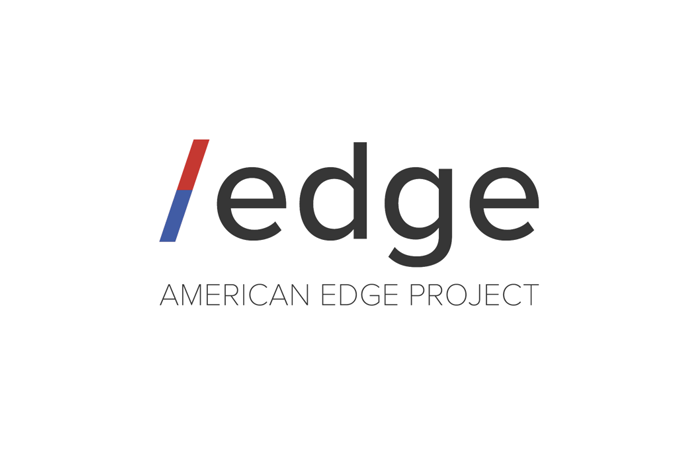Imagine a U.S. lawmaker writing laws that directly benefit Chinese and other foreign tech companies and punish American firms and threaten domestic innovation.
Hard to fathom, but it’s happening right now in Congress. Republicans and Democrats both have concerns with the technology sector, for different reasons, but instead of resolving any legitimate concerns, their combined efforts would weaken, and in some cases dismantle, America’s most innovative companies – the ones that are on the front lines in the battle against authoritarian regimes for global technology leadership.
The winner of this race will win the future. Technology is not just another sector – it is the backbone of our economy, our national security, and the advancement of democratic values both at home and abroad. American tech leadership, long taken for granted, is now being challenged by countries with antagonistic intent and oppressive values. And yet, instead of joining the fight against a common foe, some lawmakers are promoting policies that would make the situation far worse by weakening our ability to compete.
For example, the House Judiciary Committee recently passed a series of bills that “would place the U.S. technology industry at a structural disadvantage compared with China’s national champion firms.” The bills would limit the ability of the U.S. tech industry to acquire smaller startups, allowing China a free hand to scoop up innovative technologies, and would prevent companies from competing in new markets, forcing them to focus on what they are doing today, rather than new innovations of tomorrow.
The Senate Judiciary Committee has introduced a similar set of bills, which apply only to American tech companies while leaving their Chinese competitors untouched. No candidate would run on a platform of “I’m-for-sticking-it-to-American-companies-but-protecting-their-Communist-competitors.” But that’s the net effect of this legislation, which begins its journey from a bill to a law on January 20th in a markup hearing in the upper chamber.
Just so it’s clear to all lawmakers, staff, pundits, and commentators, China is our biggest military, economic, and geopolitical rival. Its stated ambition is to leverage technology to make it the world’s dominant superpower by 2035 – barely a dozen years from now. To achieve that end, China is blending planning, capital, and strategic partnerships. Highlights of this Chinese triple-threat to American leadership include:
PLANNING
- China is laddering its various five-year national strategic plans into growing success and momentum. Its “Made in China 2025” initiative boosted its advanced manufacturing capabilities, its “Internet Plus” plan from 2016-2020 modernized China’s industries and fueled growth, and it recently launched country-wide initiatives in artificial intelligence (AI), semiconductors, and other critical technologies. China has labeled technology development a matter of national security and announced aims to increase spending on research and development by seven percent annually – higher than its military budget. Moreover, several provinces in China, as well as tech- and industry-related ministries, have also introduced goals and policies to accelerate critical technologies.
CAPITAL
- Capital is the life blood of innovation. China not only subsidizes its national champion companies, but it is also luring record levels of investment into the country’s tech sector, with the bulk of the money dedicated to “hard technologies” namely semiconductors, biotechnology, and information technology. In 2021, China’s technology startups attracted a record amount of venture funding – $129 billion across 5,300 startups — smashing the previous record of $115 billion in 2018. China has even revised its financial market rules to better channel funding into priority technology areas and companies. Finally, China steals up to $600 billion annually in intellectual property (IP) from the U.S. and 21 percent of U.S. companies – one in five – say that China has stolen their IP within the last year.
STRATEGIC PARTNERSHIPS
- China’s Belts and Roads Initiative (BRI) is President Xi’s signature foreign policy undertaking. Under BRI, Chinese banks and companies seek to fund and build roads, power plants, ports, railways, 5G networks, and fiber-optic cables around the world, with the goal of significantly expanding China’s economic and political influence from East Asia to Europe to Latin America. Since its 2013 launch, 139 countries on four different continents have joined BRI. These counties, including China, account for 40 percent of global GDP and 63 percent of world’s population.
In addition to BRI, China and Russia are now developing a much closer relationship, partnering together on military exercises and joint defense development, as well as forming economic alliances on trade, technology, and energy. Driving this partnership are the leaders of the two counties – China’s Xi and Russia’s Putin – who have met more than 30 times in the past six years. The Office of the Director of National Intelligence recently reported that the two countries are more aligned than at any point in the past 60 years.
Let’s focus on the correct opponent: The greatest economic and national security threat facing America this century is China, which wants to surpass America as the world’s economic and technological superpower. America’s tech companies are not the enemy, nor an adversary. Instead, they are our best ammunition and critical national assets for our economy, national security, and the advancement of democratic values across the globe.
Rather than passing punitive legislation that handcuffs or tears apart of most innovative technology companies, Washington lawmakers should focus on bolstering our domestic innovation capabilities, and checking China’s global ambitions and slowing their theft of American technology. There’s too much at stake to get this wrong.
Doug Kelly is the CEO of American Edge Project
